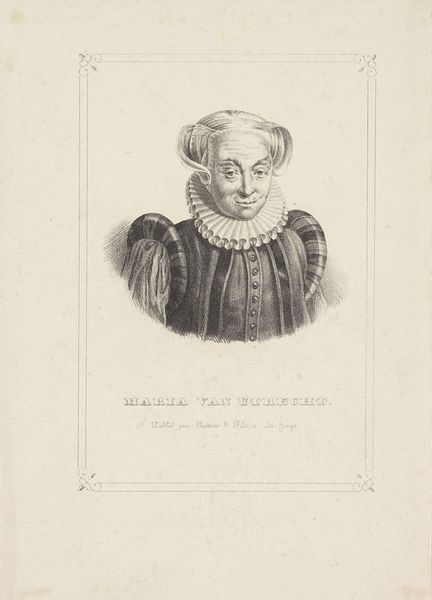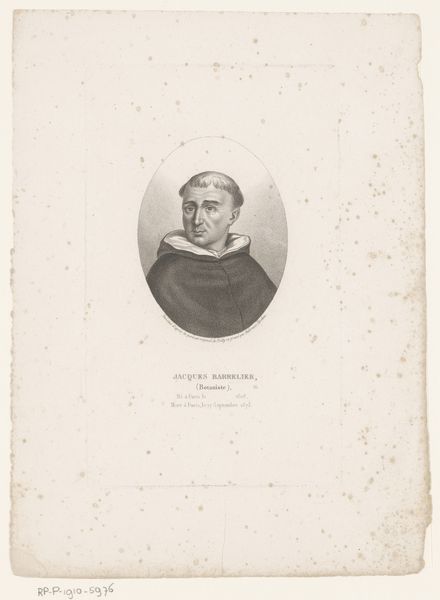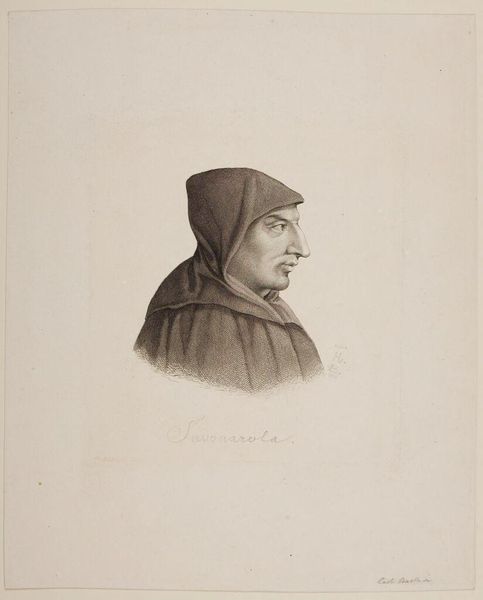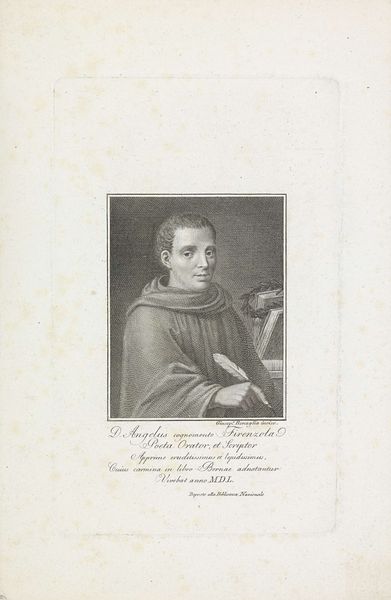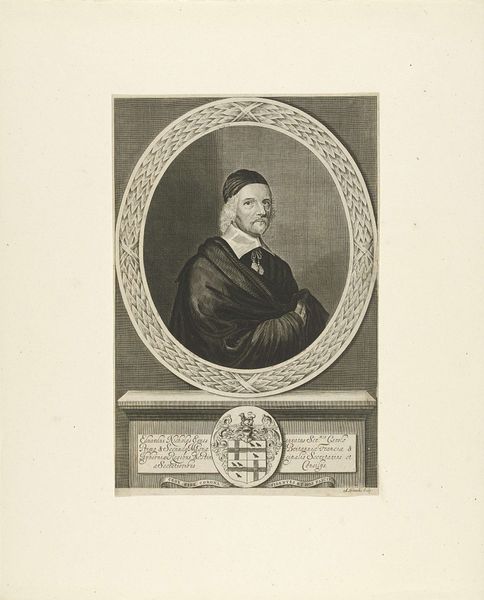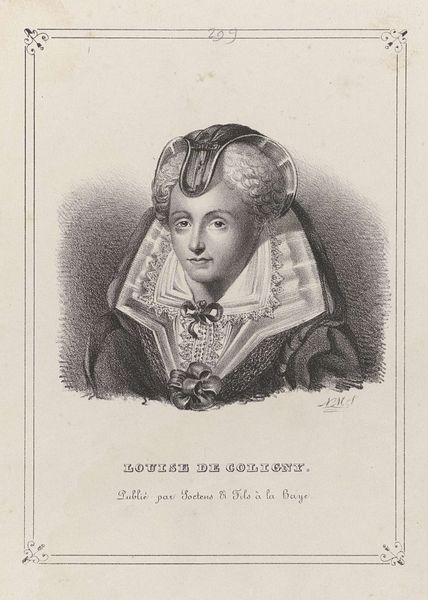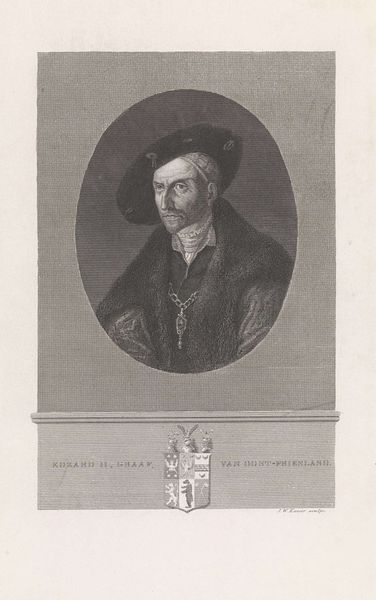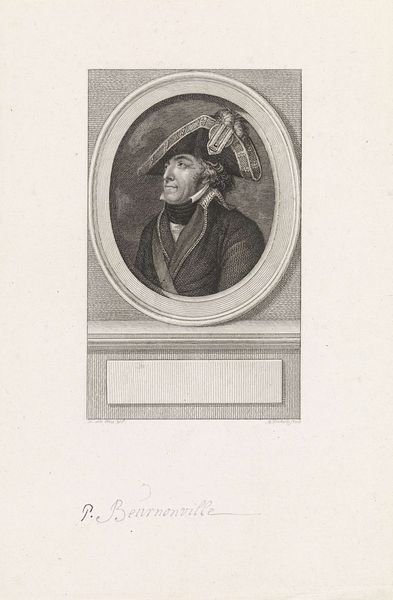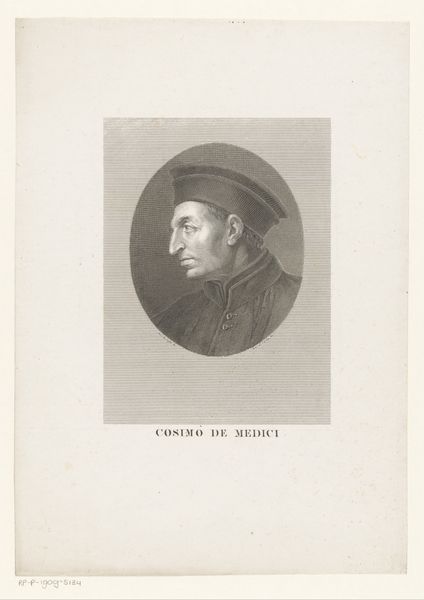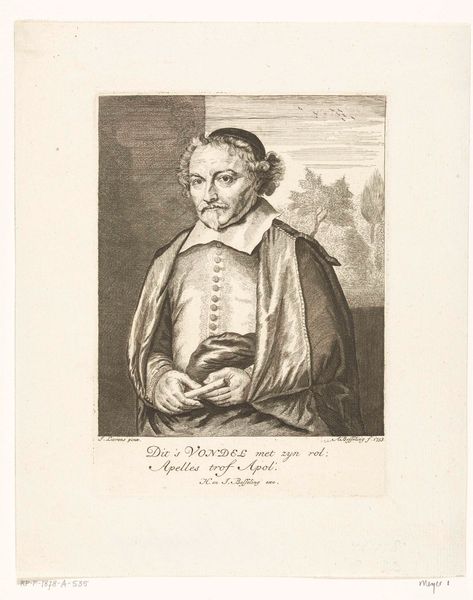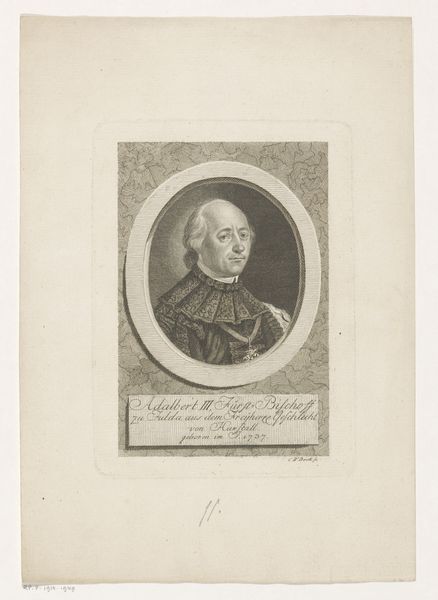
print, engraving
#
portrait
#
pencil drawn
# print
#
history-painting
#
academic-art
#
engraving
Dimensions: height 220 mm, width 155 mm
Copyright: Rijks Museum: Open Domain
Curator: This is a portrait of Jacoba van Beieren, dating from around 1838, attributed to Gerhardus Fredericus Eilbracht. It’s an engraving. Editor: She has kind eyes, doesn't she? Almost melancholic. Though, the furry collar around her neck looks impossibly itchy. Is that really what high-born ladies were wearing then? Curator: Fur was a potent signifier of wealth and status at that time, so yes, very likely! And given Jacoba’s story, a powerful woman fighting for her inheritance… there's definitely a sense of defiance there, softened by the vulnerability you perceive. This print would have circulated widely, shaping public perceptions of her. Editor: Inheritance wars fought over things other than resources! Still, it's interesting to see how class is displayed with these rigid materials. How many hours went into capturing all those lines with such incredible detail to recreate her likeness for mass consumption? Engraving is hard work. Curator: Exactly! The engraving process allowed for multiples, effectively democratizing her image, even though it still caters to a specific literate, art-consuming class. Notice the controlled hatching, a technique creating depth and form...it transforms a simple material object into something iconic. Editor: Yes, it makes me consider the labor of the engraver himself – Eilbracht – his hand meticulously translating Jacoba's image for posterity and profit. It becomes almost an artifact of artistic labor itself. The social context and production is what truly strikes me. What narratives were being consumed by the public at this time? Curator: Precisely. It becomes less about the woman herself, perhaps, and more about how we continue to engage with her story, shaped by the very material we’re examining now. Each line tells a little white lie and hides a greater truth in the context of 19th century Dutch cultural attitudes toward gender. Fascinating! Editor: I think it really speaks to this piece's endurance as not only an artifact but also as evidence that represents its time through method and narrative. We began by looking at its subject, but have reached a broader cultural space and consideration by unpacking how it was created and who would benefit.
Comments
No comments
Be the first to comment and join the conversation on the ultimate creative platform.
